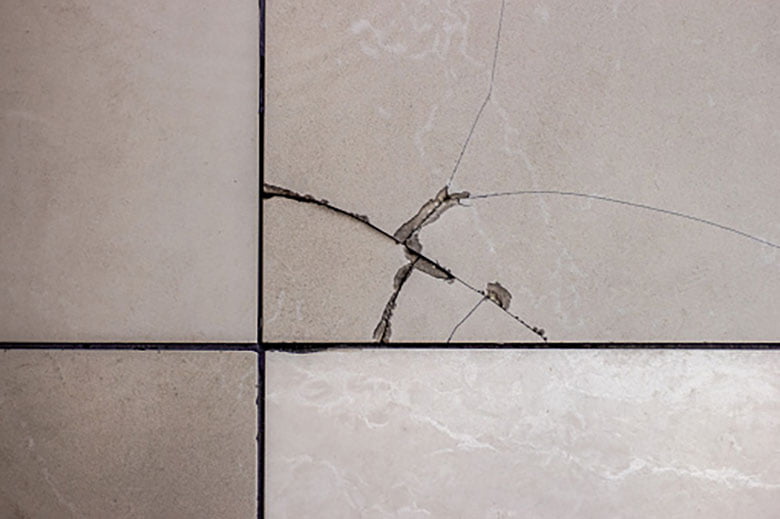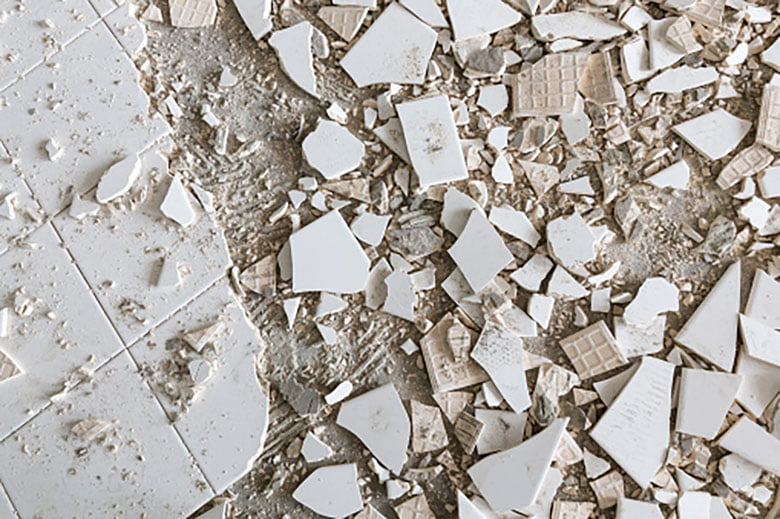Table of Contents
Like a marble floor, tiles don’t need to be polished or finished to appear excellent. Tiles are gleaming and attractive from the start. Tiles popping is a significant issue that many people find to be extremely annoying.
What Is Tiles Popping?
When floor tiles pop out, crack, or flex, the floor becomes uneven, a phenomenon is known as “tiles popping” results. Nowadays, floor tiles are more common in homes than marble or concrete.


The air trapped in the floor is one of the main causes of tile bursting, among other factors. In some weather conditions, the pressure created by this air can cause the tiles to dislodge. The side tile exerts pressure inward, while the trapped air adds pressure to blast out.
These factors contribute to the widespread preference for smaller dimension tiles, which are more likely to pop or break. People draw conclusions from this and opt for large dimension tiles, which can partially fix the problem.
Let’s examine some of the causes for tiles popping or breaking.
Why are Tiles Popping?
We spoke about how air trapped in the earth was the main cause of tile bursting. We’ll talk about it and a few other causes of it.
We must first understand the cause of tile bursting before we can find a remedy. Tiles can pop for the following reasons:
1. The Subfloor Is Not Level
A less expensive contractor might not put as much work into creating a superior floor. Screeding, another name for flooring preparation, might be shoddy and harsh. If tilers or floor installers are placed in this circumstance.
Their idleness has a great potential to contribute to this issue. This may not be evident at the time of installation, but it has long been a significant issue.
Only by ensuring that the screening process is carried out by top-quality personnel and materials can this be resolved or avoided. The ideal roughness of the wall is plaster-like.
2. When installing, the workers didn’t clean properly
Installers may be to blame for this if workers are to blame for the first issue. The subfloor must be thoroughly cleaned before laying the tiles, and skilled craftsmen are aware of this.
To clean the subfloor, they can do it alone or ask for assistance from other volunteers. However, the employee can be in a hurry and forget to take this into account.
Paying people based on volume rather than hourly helps address other issues that can cause them to put less effort into their tasks.
3. Use Of Bad Quality Adhesives or the incorrect mortar mixture
Today, mortars are mostly used to install tiles (a mixture of cement and sand). This issue might also be brought on by sand or cement that is of poor quality. The sand is of poor quality, i.e.
The likelihood of this issue occurring is typically increased by a lot of muck content. Workers utilizing factory-produced, pre-mixed mortars that typically have the incorrect water content for mixing might be another contributing reason. This is just a problem with the workers’ inexperience.
4. A Rubber Hammer Was Not Used To Properly Blow The Tile
When it comes to bigger tile sizes, there is a possibility that the tiles will be applied with unequal pressure. This will result in the creation of air, which will weaken the bonding after the mortar has dried.
Because they could be too heavy to pop, the bigger tile size will alleviate the tiles popping issue, but they won’t completely eliminate it.
5. Less Gap Provided Between Tiles
For people who want their ceramic tile to appear like marble, this is a common issue. On marbles, the gap seems to be every minute and concealed. They, therefore, want to use ceramics to accomplish the same effect.
I’m confident you can manage ceramic tiles just as easily as marble tiles. Each of the two materials used has a unique set of properties. Ceramics need more room to breathe and swell or expand. For homogeneous tiles, there must be a minimum 3 mm gap between each tile. There must be more ceramic tiles.
Here is a tiles popping up solution (how to repair)


One of the most crucial components of a home is the floors, and if they break and require repair soon, it will be very troublesome. Thus, flooring projects need to be treated seriously.
The project’s conclusion, however, has seen the start of flooring construction. As a result, both the resource and the spirit have probably been exhausted. Some people will down-spec their products to save money (alter tiles and mortars to less expensive options). This is a bad choice.
The installer is still another important factor. One of the best paying positions at Sunggiardi Construction is floor installer. Workers must have extensive experience as stone masons before we can trust them to install floors, and we will first put them to the test in the service area. By following this strategy, we make sure that only skilled professionals complete the flooring work.
FAQs:
What are the Advantages of tiles flooring?
1. Durability
2. Resistant to Water
3. Eco friendly
Which preventative measures are used for tiles popping?
One of the most crucial components of a home is the floors, and if they break and require repair soon, it will be very troublesome. Thus, flooring projects need to be treated seriously.